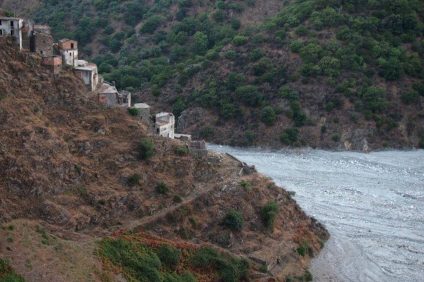Traveling through Salento our eyes will find a variety of high and jagged coasts on the Adriatic side; low and sandy on the Ionian side. In the wind rose of the ancient Greeks, "Japiz" it came from Puglia and represented the north-west intermediate cardinal point. The current wind rose is no longer centered on the Greek island of Naxos, but on the central Mediterranean.

The southern Mediterranean Sea is beaten by hot and humid sirocco winds that bring a sometimes suffocating climate to Salento. However, cheered by Greek winds coming from the north east. The ancient sailors they classified the state of the sea based on the strength of the wind and the height of the waves. Winds cause vibrations on the surface of the sea known as "waves". The foaming waves that roll onto the shoreline are called "breakers". The latter measure one and a half meters high with a wind speed of 20 knots.
Santa Maria di Leuca, the white Leucasia and the intensity of the sea
The splendid white city of Santa Maria di Leuca - the extreme edge of southern Italy - was born according to legends from petrification of Leucasia. For many years the statue of the Leucasian mermaid was placed at the foot of the majestic monumental staircase of the sanctuary. It was represented in Triptych of transcendence of the sculptor Mario Calcagnile. Before the arrival of St. Peter, who came from Palestine to begin his work of evangelization, on the site of the current sanctuary there was the Temple of Minerva. The Sanctuary of Santa Maria de Finibus Terrae it is connected to the port by the impressive staircase of 284 steps. According to tradition, it is necessary to walk the staircase at least once in life, in order not to find yourself doing it after death. The sanctuary is elected to basilica from 1990.

Right here there is also an imposing monumental lighthouse 48 meters high which can be accessed via a spiral staircase. The spiral staircase consists of 254 steps. From the sanctuary you can admire Leuca in all its gracefulness, in fact it is possible to see the entire territory. It extends from Punta Ristola a Punta Meliso, the latter right at the foot of the promontory. It is said that here, on particularly clear days, it is possible to see the meeting point between the Ionian Sea and the Adriatic Sea. In this extension the territory is adorned with nineteenth-century villas which give it a fairytale atmosphere.
Villas with sparkling colors: living in a dream
Walking through the streets of Leuca means inebriating the eyes with nuances from red to blue, from yellow to the mixed marble shades that dress its villas.

During the Second World War, some of them suffered significant damage which was followed by renovations. Therefore in part the present aspect differs from the original one. The villas are however an explosion of beauty and elegance: built in different styles, mostly oriental. Villa Mellacqua, Villa the Meridiana, Villa Episcopo, Villa Arditi, Villa Daniele, are just some of the villas in the area. An event that takes place annually in summer is "Ville in festa", during which access is allowed to be able to admire them.
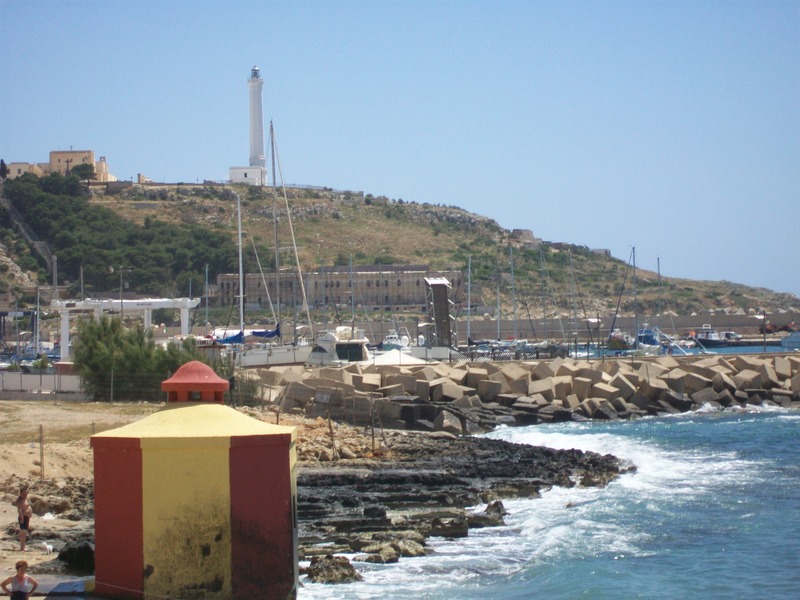
Santa Maria di Leuca: its caves, the emerald sea and the infinite
Together with the villas, Santa Maria di Leuca presents us with unique landscape peculiarities. A true casket of beauty. Each of its caves is the bearer of legends. Rich in Neolithic inscriptions and finds, are all surrounded by emerald colored waters. The harmonic sounds of the waves evoke ancient stories and legends. Maidens, little shepherds, mermaids and fantastic characters re-emerge to the mind even knowing that “The sea is a poem without words to be listened to in silence". The Cave of Mannute it is a complex of intercommunicating cavities.

Its numerous stalactites and stalagmites make it a highly suggestive place at about twenty meters above sea level. There Devil's Cave welcomes the visitor with a short natural descent into the cave. It consists of a main entrance, a central part and an atrium. Located on Punta Ristola, its name derives from strange noises coming from inside. Another suggestive cavity is the Cave of the three doors, whose name evokes an entrance with three entrances. It is a cave full of plays of light. Leuca is full of caves to discover: among these we mention the Porcinara cave, Cave of the Child, Dragon's Cave.
From the sheer cliffs to the bagnarole: the bath for young and old
Punta Ristola is characterized by cliffs and from here it is easy to enjoy a breathtaking view thanks to enchanting benches. If however this is a suitable place for adults for a rejuvenating bath, children and ladies can benefit from having a bath. The bagnarole were intended for beautiful women who bathed away from prying eyes. They belonged to the owners of the nineteenth-century villas that make the promenade a splendor with their shapes and colors.
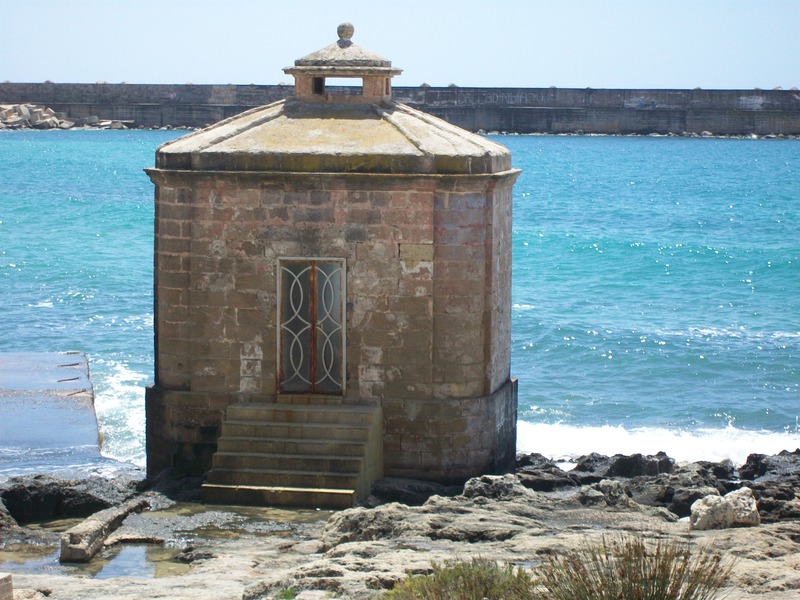
The latter were the most luxurious bath tubs. They were used to bathe and protect themselves from tanning. In those days it was preferred to keep a white complexion symbol of nobility even during the summer. However, there were also other types of bagnarole. Some, less well-kept and with almost natural appearances, were simply carved into the rock. The 'basins', usually used for those unable to swim, were (and are) among the rocks.
The creation of Leuca according to the legend of Leucasia
Seeing Santa Maria di Leuca is feeling caressed by the breakthroughs that impress visions of infinite worlds in the soul. When the waves break on a high coast, a beating groove will form in the long run. Over time, that furrow will be eroded until the rocks above collapse. The consequence will be a retreat of the bank. This irregular retreat will lead to the formation of stacks. In Salento some stacks are dedicated to legendary figures. Let's think for example of the “Le due sorelle” stacks in Torre dell'Orso. In Santa Maria di Leuca, on the other hand, the cliffs of Punta Ristola and Punta Meliso are the result of a magical transformation.
Leucasia, white siren of Leuca
There was a land called Leuca, of which many had told. This land was created by an all white mermaid named Leucasia. She was queen of that emerald sea where Ionian and Adriatic met. It is said that Leucasia, while intoning one of his songs, saw a shepherd boy named Melisso. Leucasia wanted to attract their attention. Melisso, however, already had a young beloved named Aristula. Therefore, although Leucasia's graces were undeniable, they were not enough to make him unfaithful.

The mermaid, resentful of the shepherd's refusal, discovered him one day hugging Aristula. Thus he carried out his terrible revenge. He unleashed a storm with the force of his tail. This resulted in the death of the two lovers on the cliff. Still not satisfied, Leucasia separated the two lifeless bodies, abandoning them on the two opposite points of the gulf. Minerva, whose temple stood high on the cliff, took pity. He therefore petrified the two bodies making them eternal. Two great cliffs who are there today Punta Meliso , Punta Ristola. Leucasia, petrified by remorse, turned into the beautiful white city of Leuca.
The flowers of Salento and the smell of the sea
“A mermaid was spinning her tail lost in the water. She jealously guarded her secrets. Her hair was imbued with the smell of carpobrotus that the wind carried from the cliff towards her. A mermaid rolled around in the white dress of an arrhythmia between logorrhoeic waves and crystal fringes ". So I wrote in one of my poems set in Santa Maria di Leuca. "He covered opium dreams with emotions" my imaginary siren.
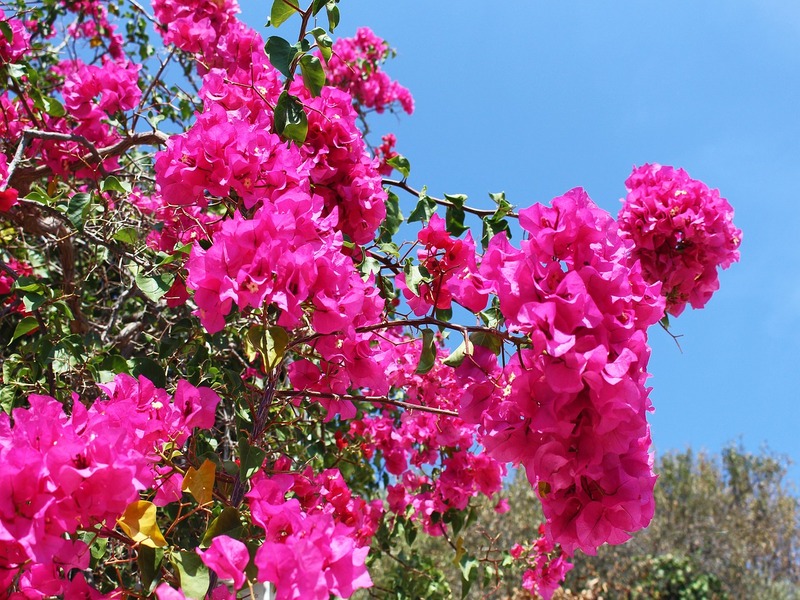
But here, in Leuca, more than opium we will find almond blossoms and small ones wild orchids which delight the sense of smell with a magical perfume. Buttercups with yellow or white petals, poppies, peonies with pink petals whose symbolic meaning is that of shyness. A bit like Leuca is shy and silent, in front of the eyes of those who admire her. Wild marigolds fill the surrounding fields all year round. The geraniums and the Pelargonium scarlet red together with the pelargonium odoratissimum can not miss.

And then there is the cyclamen, a flower loved by Salento. That cyclamen whose meaning is "love that asks for nothing in return". And the calla, easy to adapt in Salento for the humid climate. The cliffs are adorned with flowers of carpobrotus twigs pink color and among the houses in the alleys the Bougainvilleas that slip like carpets on the walls in their equally rosy shades. Although it is born on the sand dunes and in Leuca we will find mostly rock, it is worth remembering two symbolic flowers of Salento. The white lily - usually depicted in images of saints - and the Turkish carnation, mentioned in some legends.
The Christmas of Santa Maria di Leuca: the crib and the museum
Santa Maria di Leuca is a place to visit all year round. It is in fact an inhabited center even in winter and where you can relax at any time. In Basilica of Santa Maria di Leuca A beautiful handmade olive wood nativity scene is set up for Christmas. In Christmas 2008, two ivory cribs sparkling with emotions came to life. Viva is also the tradition of living nativity scenes.
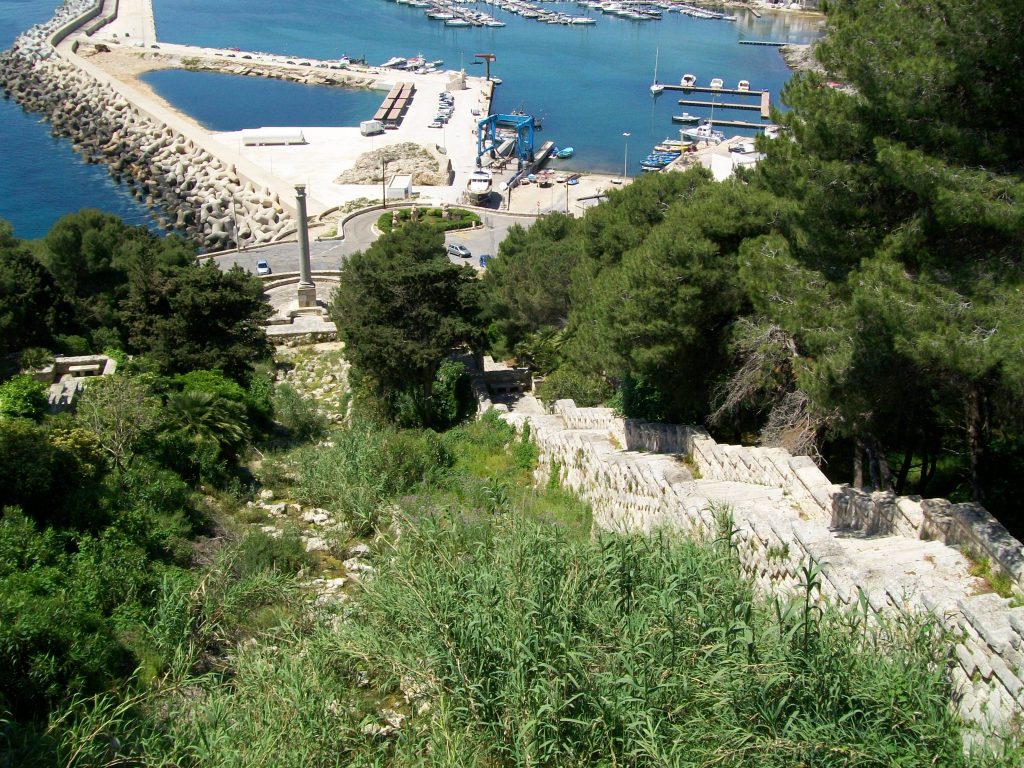
In the nearby Castrignano del Capo, in the locality "Terns", In the past a living nativity scene was set up. Inside old farms of the '900. The nativity scene, which developed on a land of over eleven thousand square meters, was interpreted by real blacksmiths, potters and weavers. Going further, however, in the nearby city of Tricase, you can still admire an immense living nativity scene every year. Probably the largest in the world. The nativity scene is set up in Monte Orco, a splendid hill.
The museum attached to the basilica: Museum Vito Mele
Art lovers will find the beautiful museum with works of artists national and international. Born from the generosity of Vito Mele, Salento born in Presicce in 1942. The museum was inaugurated in July 2004 and set up in the rooms adjacent to the Basilica of Leuca.
Notes on the craftsmanship of Salento
Salento art, craftsmanship, are made of poor or local materials such as olive wood, Lecce stone, waste paper to make papier-mâché figurines. The clay for the creation of terracotta artifacts. The ceramics with which typical artifacts and objects such as the whistle are made. Capo di Leuca is an area rich in marsh reeds. The latter made the municipality of Presicce Acquarica famous above all for the processing of finely decorated rush baskets.

In conclusion…
I like to conclude this article with a poem of mine for Santa Maria di Leuca.
“A seagull is about to be swallowed by the evanescent foam of your surface: with a blanket of whiteness you will wrap your rigid limbs, Santa Maria di Leuca. For a lost angel you will hold him in the current. The stacks will consecrate him indelibly in the heart like a name that is buried deep on him. A seagull that reappears in the intermittent suction of the high waves is a wanderer who cannot walk, but who at times moves a few steps of wonder ".



